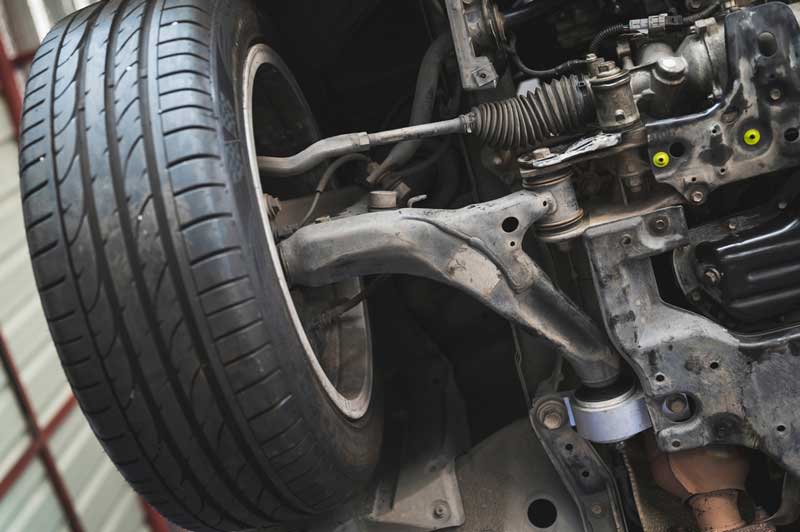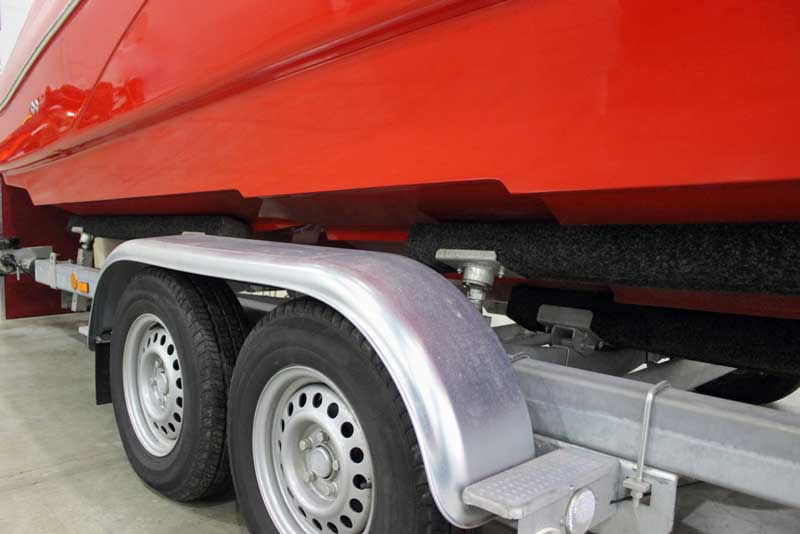When a car is moving forward, the axles should come to your mind immediately. Yet, not everyone cares about the involuntary function of the car.
This question might appear so simple to most readers, but it is a vital feature in a car that is always overlooked.
In order to make the right choice while choosing your dream vehicle, it is advisable to have knowledge of the various parts of the truck or vehicle. So, is your vehicle a 2-axle vehicle?
As you read further into this article, you will know the category into which your car’s axles fall.
Let’s get started!
What Is an Axle & What Does It Do?
A car’s axle can be defined as the middle beam for a turning gear/wheel. It can also be seen as the major support shaft that runs through the distance of your car to which your wheel is attached. The total amount of axles in a car is equivalent to that of the wheels in a car.
A car that has three/four wheels is usually a two-axle car. Most vehicles, pickup trucks, and SUVs are examples of cars with two axes.
A vehicle with three axles could have 6 to 10 wheels. A tractor-trailer also known as a semi-truck is one example and is sometimes referred to as an 18-wheeler.
There are also four-axle cars, though they’re not common, their wheels are up to 14. An example of such a vehicle is a garbage truck.
Also Read: Transmission Slipping (Causes & Fix)
What Is the Main Role of an Axle?
1. Support the Vehicle’s Weight
The main function of the axle is to assist your car and the weight of your cargo. Your axle’s number increases with weight, as indicated in your FHWA car classification. That’s why garbage trucks and semi-trucks possess a lot of axles because of the need to sustain a large number of weights.
2. Transmit Power from the Engine to the Wheels
Transmitting power from your engine to your vehicle’s wheel is another role of the axles. A gearbox known as the differential is made up of several gears that the axle makes use of.
This differential allows each of the wheels to spin at a different speed. It is necessary because the outer wheel of the turning car must travel a long distance compared to the inner wheel.

3. Impacts on a Vehicle’s Mobility
Your axle’s number has a great effect on the car’s mobility. For instance, to pass through a narrow place, garbage trucks have to make a sharp bend; that’s the reason for the 4-axles.
Factors That Decide the Type of Axle on a Car
There are a few factors that determine the kind of axles in a vehicle. One of them is the number of wheels on your vehicle. Vehicles with 2-wheels have two axles, one at the front and the other at the back. Vehicles with 4-wheels have 4-axles; two at the front and two also at the back.
The weight of the vehicle is another factor. Vehicles that are heavy require more axles to sustain their weight. Vehicles with two axles support about 26,0000lb. A vehicle with 3-axles supports about 36,000lb, while a 4-axle vehicle supports about 46,000lb.
Therefore, a vehicle with 2-axles would be nice for light vehicles with 2-wheels. A 3-axle vehicle would be nice for a much heavier car with 4-wheels. Also, a 4-axle vehicle would be nice for a heavier vehicle with 4-wheel.
Different Types of Axles Used in Automobiles
We have three (3) major kinds of axles. They’re:
1. Rear Axle
The rear axle delivers so much power to your driving wheels. The two parts of the rear axle are half beams connected by differential. Generally, rear axles spin together with the car’s beam.
Types of Rear Axles
All the rear axles differ. We have four (4) major types of rear axle:
Semi-floating Axle: This is the most popular kind of rear axle. One of the wheels is joined to each of the half-shafts. The shaft is then joined to the differentials, which send or convey power from your engine to your wheel.
Full-Floating Axle: This type of axle has a similar design to that of the semi-floating axles. So, your half-shaft is not joined to your differentials. They’re joined to the bearing inside your axle’s housing instead.
Three-Quarter Floating Axle: This axle is similar to the semi-floating. So, just 1-wheel is joined to both shafts, while the other is joined to the differentials.
One-Half Floating Axle: This type of axle is not common. Its basic design is similar to that of the 3-quarter floating axles. So, the wheels are joined to your differentials.
2. Front Axle
The front axle helps in steering and absorbing shock from the road’s uneven surfaces. The four major parts of your front axle are the swivel pin, the beam, the stub axle, and the track rod. This axle must be very strong, usually made from carbon steel or nickel.
3. Stub Axle
This axle supports just one wheel. Other ends take it by your car’s chassis or some other objects. The road wheels mount at this kind of axle. Kingpins can be used to join your front axles to your stub axles.
This type of axle rotates around the kingpin, a small drive built in the eyes of your axle beam, which is secured by narrow cotter pins.
Types of Stub Axles
There are four types of stub axle:
Elliot
Elliot is made up of a kingpin, a cotter, and a yoke.
Reverse Elliott
Just as the name implies, it consists of a reversed configuration.
Lamoine
This axle features an L-shape spindle instead of a yoke-style pivot.
Reverse Lamoine
The design of these axles is polar opposed to Lamoine stub axles.
Types of Front Axles
The two (2) kinds of front axle include:
1. Dead Front Axle
The front axle does not spin with the wheel. They remain still. Most differentials and dead front axles have coverage that protects them from water and mud.
Types of Dead Axles?
Having known the dead axle’s functions, let us look at the different kinds that exist. We have two major kinds of dead axle:
- Trailing and
- Solid
Solid Axle: This is the type that is joined to your car’s frame. It is also joined to your wheel by a suspension member.
Trailing Axle: Trailing axles are not joined to the car’s frame; it is joined to the wheel by a suspension member instead.
2. Live Front Axle
Contrary to the dead front axle that transfers power from your gearbox to your front wheel, the front axle that is alive does the contrary.
Types of Live Axles
We have two major types of non-dead axles: they are dependent and independent live axles. Dependent live axles are axles which are joined to the frames of your car. It is also joined to the wheel by a suspension member. While an independent live axle is one that is not joined to the frames of your car, it is joined to the wheel by a suspension member instead.

What Is a Four-Wheel Drive Axle?
These types of axles are used in cars that have 4-wheel drive. This 4-wheel drive is in charge of power transmission from your engine to your wheels. It is also in charge of steering the car.
What Causes an Axle to Break?
Though axles are typically built to withstand or carry heavy weights, there are limits to their strength or how long they can last.
Below are some of the reasons why the axle might break:
- Old vehicles usually encounter rusty and brittle axles.
- Your vehicle could break due to too much weight compared to the standard it is meant to carry.
- Driving your car on a rough road or terrain stresses your axle.
How to Know if You Have a Bad Axle
Your axles are subject to wear and tear because their job is usually too stressful.
There are lots of circumstances that can cause damage to the axle. Below are some of the symptoms of a bad axle:
- Not only is the wheel not properly aligned, but there could also be some cracks in the car’s universal joints.
- If you notice that something is off when you’re driving your car, for instance, if the car is bending.
- If there’s a loud vibration all over the car when you want to take a turn or catch the brakes.
- If you hear some clunking sound when you are changing the gear.
If you notice any of the above symptoms, you need to take your car to your mechanic for proper check or inspection. They’ll inspect the car to see if there’s anything that needs to be changed or repaired.
A rear axle is quite affordable because it is made of metals, and replacement of coasting costs about $150.
Taking your vehicle regularly for checkups helps in reducing future repair costs.
Also Read: Lower Control Arm Replacement Cost
Frequently Asked Questions – 2-Axle Vehicle
What is a 2-axle vehicle?
A 2-axle car has 3 or 4 wheels. Examples of the most popular 2-axle cars are pickup trucks and SUVs. A 3-axle car has 6 or more wheels. The major or primary function of the axle is supporting the car’s weight, and its cargo.
What is considered a 3-axle vehicle?
3-axle cars are trucks, trailers, or tractors with 3-axles grouped at the rear. 3-axle cars are mainly used to tow heavy loads. The numerous wheels and axles help for better stability and weight displacement. Cement mixers, tow trucks, and dump trucks normally have 3-axle designs.
What is a 2-axle truck?
It is a single unit truck with 2-axles and 6-tires all on just one frame. These trucks include, recreational and camping cars, home motors, etc., a 2 axles truck has 2-axles and a double rear wheel.
What is a 1 axle vehicle?
One axle truck is a huge truck that makes use of just a single axle in the rear. It is mostly used for city delivery trucks, while a tandem axle truck that makes use of 2 drive axles is mostly used for long-tow trucking.
Are 2 axles 4WD?
4-wheels drives (4WD) are vehicles that have 2-axles that provide torque to the 4-axles end. The term 4-wheel drive market in North America is usually known as a system optimized for out-of-the-road driving requirements.
Do normal cars have two axles?
Most vehicles feature four tires, i.e., 2 sets of tires. From the above definition of the axle, it can be seen that an axle joins two opposite wheels and pushes the power of the engine to move your wheels. The 2-set of the tire, one at your rear end, the other at the front wheel, is equivalent to 2-axles.
How many axles does the average car have?
An average passenger’s vehicle has 2-axles, one axle for each of the wheels. Regardless of the fact that there have been changes in design in the past years, the counting of the axles does not change. Take a look at the car from the sides, then count the number of wheels. That is the number of axles that the car has.
Is a car a 2 axle vehicle?
As earlier indicated, the most popular 2-axle vehicles are cars, pickup trucks, and SUVs. A 3-axle car has six or more wheels. The major function of the axle is supporting the vehicle’s weight and cargo. The weight of the car determines the number of axles it has.
Cost of replacing an axle on a 2 – axle vehicle
On average, replacing your vehicle’s axle shaft costs between $880 to $959; this is based on your vehicle model and the broken axle. So, it could be possible that all you need to do is just fix your axle instead of replacing or changing it.
Costs of repairing an axle on a 2 – axle vehicle
This costs about $500 to $600 excluding fees and taxes. The cost varies depending on the vehicle type, make, brand, and model. The cost of labor also varies from around $50 to $140 based on the duration it takes for the vehicle’s model.
Conclusion – 2-Axle Vehicle
From the above discussion, it can be seen that many factors are responsible for the number of axles a vehicle has. Self-inspection can be done if you wish to know the number of axles in your vehicle. Reading the owner’s guide or asking your mechanic can also help.
Lastly, you should know that there are different types of axles. The differences between two, three, and four-axle cars are the number of axles they feature. The 2-axle cars have 2-axles, 3-axle-cars have three axles, and 4-axle cars have four axles. Every vehicle or car has different advantages and disadvantages.
When making a choice of car, it is really necessary you put the kind of terrain you’ll be running on into consideration, and also the amount of weights you would be carrying.

